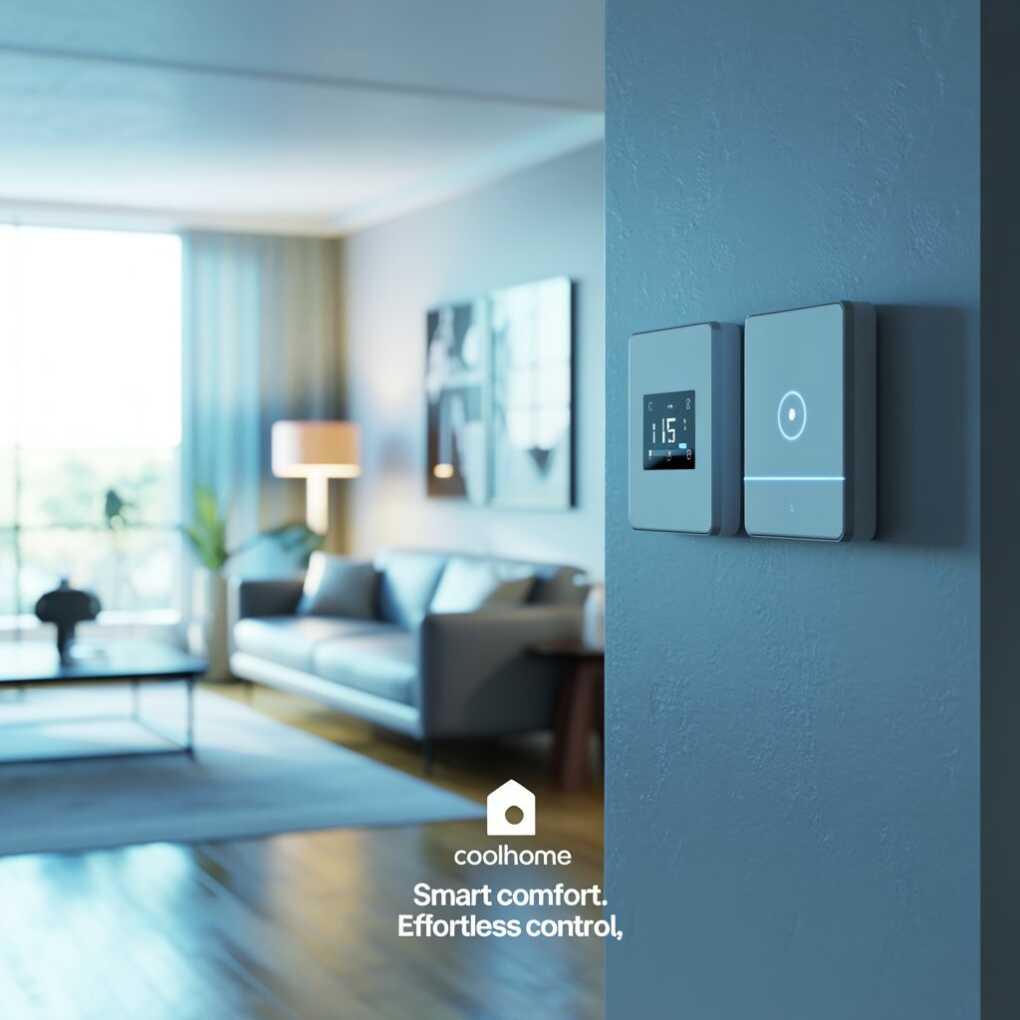In today’s world, where summers are growing hotter and energy costs are steadily rising, keeping your home cool has become more of a necessity than a luxury. Modern homeowners want to achieve comfort without compromising on sustainability or facing sky-high energy bills. Thankfully, advances in technology and design have created a wide range of efficient cooling solutions that not only keep homes at an ideal temperature but also align with modern eco-friendly living.
This guide explores the best cooling methods available today, from traditional systems to smart technology and sustainable alternatives, while also offering practical tips for maintenance and design. By the end, you’ll be equipped with the knowledge to make the best choice for your home, budget, and lifestyle.

1. Understanding Modern Cooling Needs
Every home has unique cooling requirements. Factors like property size, insulation quality, the number of occupants, and even your local climate all influence what type of system will work best. For instance, a small, well-insulated flat may only require ceiling fans and portable units, while a large family home could benefit from a central air conditioning system with zoning features.
Energy efficiency is now at the forefront of cooling solutions. Homeowners are increasingly looking for ways to stay comfortable while reducing environmental impact and saving money on utilities. Recognising these needs is the first step to finding the right cooling system.
2. Traditional Cooling Solutions
Before diving into advanced technologies, it’s worth noting the simpler options that still work effectively:
- Fans and Ventilation Systems: Ceiling fans and extractor fans remain one of the cheapest and most energy-efficient ways to improve airflow and reduce heat buildup.
- Window and Portable Air Conditioners: These units provide quick cooling but can be noisy and less efficient for larger spaces.
While these solutions offer temporary relief, they often fall short in efficiency compared to more advanced systems.
3. Energy-Efficient Air Conditioning Systems
For modern homes, the following systems deliver both comfort and efficiency:
- Split-System Air Conditioners: These are perfect for individual rooms or smaller homes. They’re quiet, sleek, and energy-efficient.
- Central Air Conditioning: Best suited for larger properties, central systems distribute cool air evenly throughout the home. When paired with smart thermostats, they can significantly cut down energy use.
- Ductless Mini-Split Systems: Ideal for homes without ductwork, these systems allow room-by-room control, making them flexible and efficient.
When choosing a system, consulting professionals can help match your specific needs to the right technology. For example, an air conditioning company in Essex can provide expert advice, installation, and maintenance services tailored to your home’s layout and local climate.
4. Smart Technology in Cooling
Smart technology has revolutionised home cooling. With a smart thermostat, you can program cooling schedules, control temperatures remotely via mobile apps, and track energy consumption in real time. Many systems even “learn” your habits, adjusting cooling automatically for maximum comfort and efficiency.
Integration with voice assistants and home automation systems makes smart cooling convenient and future-ready, ensuring that you always return to a comfortable home.
5. Eco-Friendly Alternatives
Homeowners who want to reduce their carbon footprint can explore these sustainable cooling options:
- Evaporative Coolers: Also known as swamp coolers, these systems use water evaporation to cool the air, making them excellent for dry climates.
- Geothermal Cooling Systems: By harnessing the stable temperature of the earth, geothermal systems provide sustainable and efficient cooling.
- Solar-Powered Air Conditioning: Combining solar panels with efficient AC systems allows you to cool your home using renewable energy.
Although some eco-friendly systems have higher upfront costs, the long-term savings and environmental benefits often outweigh the investment.
6. Passive Cooling Design Tips
Beyond appliances and systems, the design of your home plays a huge role in cooling efficiency. Here are a few passive strategies:
- Insulation and Window Glazing: Proper insulation and double or triple glazing keep heat out in summer and trap warmth in winter.
- Cross-Ventilation: Positioning windows and vents strategically allows natural airflow to circulate cool air.
- Shading and Landscaping: Planting trees, using awnings, and installing shutters can block direct sunlight and keep interiors cooler.
- Reflective Roofing Materials: Light-colored or reflective roofing materials can reduce heat absorption and improve overall home comfort.
7. Cost vs. Efficiency: Making the Right Choice
Choosing a cooling system often comes down to balancing upfront costs with long-term savings. Energy-efficient systems may require a higher initial investment but typically lead to lower utility bills.
Homeowners should also explore government incentives and rebates that encourage sustainable installations. For example, grants for renewable energy systems or tax incentives for eco-friendly upgrades can make advanced solutions more accessible.
8. Maintenance for Long-Term Efficiency
Even the most advanced cooling system will underperform if neglected. Regular maintenance ensures both efficiency and longevity. Key practices include:
- Cleaning or replacing air filters every few months.
- Checking and cleaning ducts and vents to avoid blockages.
- Scheduling professional servicing annually to monitor refrigerant levels and mechanical parts.
- Using smart monitoring tools to detect issues early.
By following these steps, you can prevent costly repairs and keep your system operating at peak performance.
9. Choosing the Right Cooling Solution for Your Home
Before committing to a cooling system, consider the following checklist:
- What is your budget for installation and long-term running costs?
- How large is your property and what are its insulation levels?
- Do you prefer eco-friendly or smart-enabled systems?
- Will you benefit from professional advice or a tailored installation?
Working with experienced professionals ensures your investment pays off. Companies like Christy Cooling Services, a trusted provider in Essex, specialise in installing and maintaining a wide range of systems, helping homeowners achieve both comfort and efficiency.
Conclusion
Efficient cooling is more than just a luxury — it’s a vital component of modern living. With rising energy costs and a growing focus on sustainability, homeowners have an array of solutions at their disposal, from traditional fans to high-tech, eco-friendly systems.
By understanding your home’s specific needs, exploring smart and sustainable technologies, and ensuring regular maintenance, you can create a cool, comfortable, and energy-efficient living space. Whether you’re upgrading an outdated system or designing a new home from scratch, investing in the right cooling solution is a decision that pays dividends in comfort, savings, and long-term property value.
